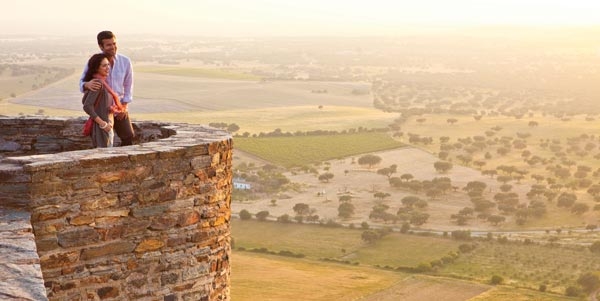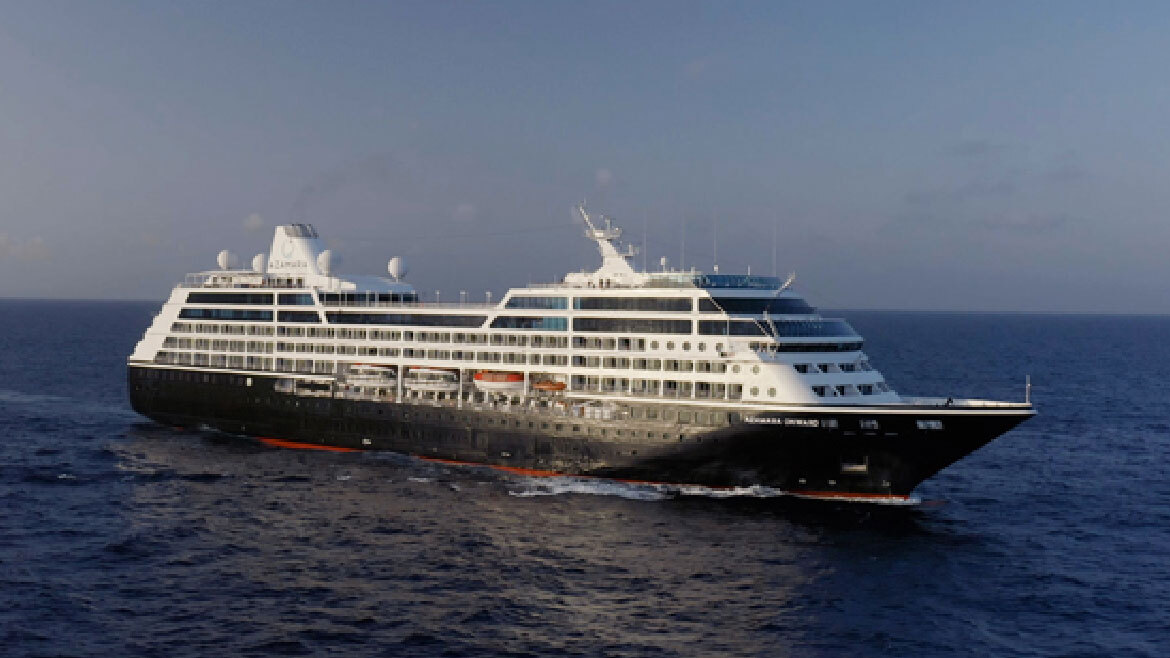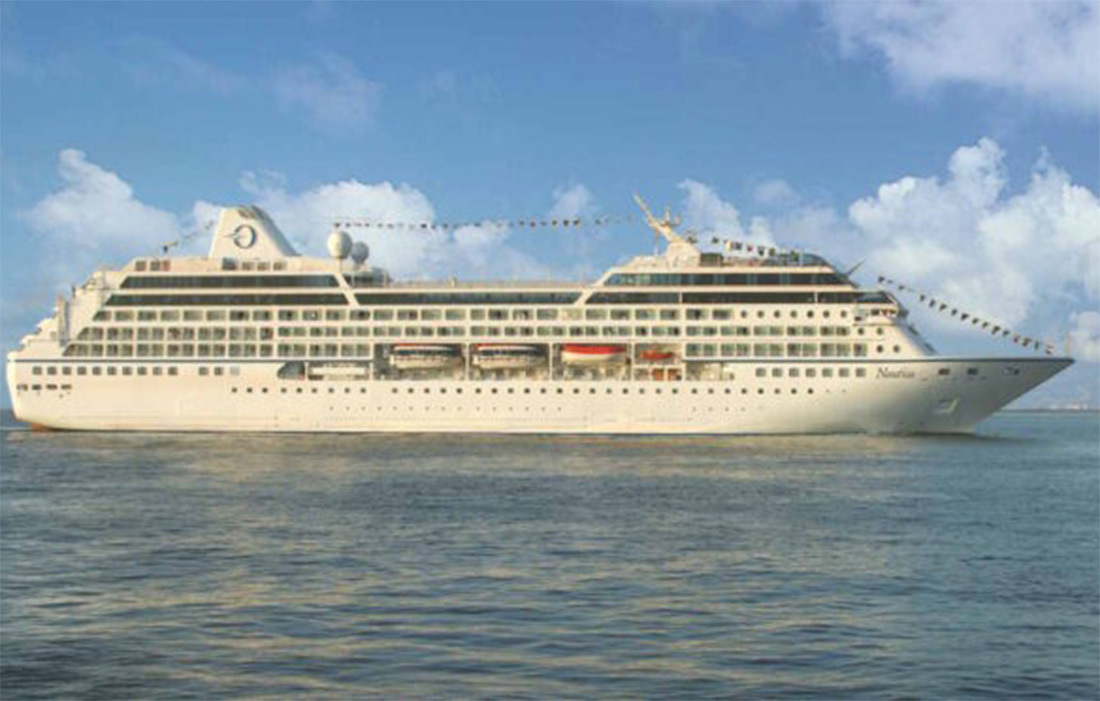Portugal: Beauty and the beach
Quite right too, it’s a beautiful place. But we decided not to go there. Instead we hit Porto & the North, Centro de Portugal and Alentejo.
The most striking thing about Portugal is the care everyone involved in tourism is taking to improve the holiday offering. It’s as if in the last 10 years, a lot of Portuguese independently had the same idea – let’s make Portugal the best it can be.
Porto and the north
A trip to this part of the country begins in the darling of the city-break world, Porto.
Narrow streets and a World Heritage-listed centre show off the cultural depth of this city, while its restaurants and modern architecture demonstrate a21st-century vibrancy.
A city doesn’t get two Pritzker Awards for architecture without creating impressive spectacles such as Casa da Música by Rem Koolhaas and the Serralves Museum of Contemporary Art by Siza Vieira.
The river Douro runs through the city and a cruise along it is a must to get a unique view of Porto.
The food ranges from the traditional to the creative but uniting them all are great ingredients and passion. The nearby seaside town of Matosinhos is the place to go for fish or to relax on the beach.
Venturing farther out into the Minho region, visitors will find the historic town of Guimarães, a World Heritage Site since 2001 and European Capital of Culture in 2012. The most iconic view of the region is from the top of Penha Hill, which can be reached by cable car.
Minho is also well known for landscapes of fields and vineyards, and for nature lovers, there’s the Peneda-Gerês National Park, which is a World Biosphere Reserve that is home to wolves, birds of prey and garranos, a breed of wild Portuguese horses.
Braga is home to the oldest cathedral in the country and has the most incredible Easter celebrations.
And Viana do Castelo has windy beaches, which are perfect for kite and windsurfing. The diversity here continues with the Basílica of Santa Luzia, and on the border with Spain nearby is the small town of Vila Nova de Cerveira, known for its biennial arts festival.
This part of the country is rich with Unesco World Heritage Sites, while in the Douro region, a gallery of rock-art displays, which have the World Heritage stamp of approval, can be found in the Vale do C 'a and the Alto Douro wine region.
An absolute must is a boat trip through the wine region. Here, both sides of the river are covered in stunning terraced vineyards that produce, among other things, the most famous wine in the country, port. The scenery is arguably at its very best at the Mirador of São Leonardo da Galafura halfway between the Régua and Vila Real.
In Trás-os-Montes, the traces of the Roman occupation can be seen in the medieval buildings and spas such as those in Vidago, Chaves. Here, there is also a natural park populated by deer and wolves who live alongside small villages with granite houses.
Alentejo
The Unesco World Heritage Site of Évora, which was built in the 14th century, is an ideal place to start exploring Alentejo.
One of the sights guaranteed to haunt and thrill is the 15th-century St Francis Church, which is decorated in Gothic and Manueline style, and contains the famous ‘chapel of the bones’. Decorated with the skulls and bones of more than 5,000 people, the room now sparks more gasps of horror and morbid interest than the meditation it was originally built for. The inscription above the entrance to the chapel reads “We bones that are here, for yours await”.
Keeping it local
The side streets of Évora are filled with local specialities to buy including wine, olive oil, Arraiolos carpets and cork.
Portugal accounts for about 50% of the world’s cork exports and they use it inventively. Shoes, handbags, aprons, place mats, iPad covers, hats and more...cork is versatile, it turns out. And so, apparently, is Portuguese ice cream. The Dom Joaquim restaurant in Évora boasts a range of ice-cream flavours from vanilla to the more outrageous eucalyptus with honey and red-wine flavour.
Often served with cinnamon, it’s the perfect pudding after a large meal of traditional, slow-cooked,black-pork cheeks or octopus. The restaurant is tucked away inside the eastern side of the medieval wall and is a favourite with the locals.
The archaeological heritage across this region is a major tourist draw, particularly Cromlech and Menhir of Almendres. The former is 95 stones, some decorated with carvings, set in two circles, and the latter a four-metre-high individual stone.
Religious about luxury
Rich red wines and bubbly were our chosen tipples at 15th-century convent turned luxury hotel Convento Do Espinheiro, which, like the wine, gets better with age.
Request a room in the convent-style west wing to enjoy a view of the sunset, Évora and the outdoor pool. The hotel also has a heated indoor pool, Jacuzzi, sauna, Turkish bath and treatment rooms, and a nightly tour to explore the history of the convent, which starts in the church ofSt Jerónimo and ends in the water cistern turned wine cellar. For day guests, St Jerónimo’s Church, painted in a faux marble style popular in the period, has spectacular, traditional Portuguese walls.
Clients should look for the saucy wall painting of St Jerónimo punishing himself for fantasising about the seductive women also featured in the painting.
From sailing to stargazing
For a change of pace, a boat ride on the Alqueva is perfect. This great artificial lake, one of the biggest in Europe, is packed full of activities from sailing and kayaking to great hiking trails.
And after the sun sets, the region’s Dark Sky Route comes to life. The only Starlight Tourism Destination in the world, the Dark Sky Route is 1,170 square miles of protected area from which to stargaze.
Marble magic
A one-hour drive from Évora is the town of Estremoz, built around a hilltop castle that dominates every view.
A walking tour is the best way to explore – Vagar Tours does the best – and they can be tailor-made so your clients can experience all the sights from town halls to marble quarries.
The depth of the marble quarries tends to shock visitors – some more than 100 metres. For weekday visitors, the current town hall on the main square is a must for the traditional Portuguese-style paintings, depicting non-religious scenarios, and the facade carved out of local pink marble.
Grape expectations
You’ll hear a lot about wine when learning about Portugal and rightly so. Portuguese wines are made using a variety of grape types, as opposed to the standard varietals such as chardonnay and shiraz, and this creates more-diverse flavours.
In Alentejo, many ancient techniques are still used for crafting wine, and to fully understand the processes and the tastes, a meeting with a local winemaker is a must.
Miguel Barroso Viegas Louro is one such expert. He runs tastings at the top of Estremoz Castle Tower and takes people to his family’s vineyard to explore, taste, learn and, if so desired, stomp on some grapes.
Near here, we sat amongwine-lined walls and ate from Mason Jars and marble bowls at Mercearia Gadanha. This quaint restaurant near the centre of town is also a delicatessen offering locally produced meats, cheeses, jams, relishes, and wine.
Bread is served in reusable bags with ham and garlic butter as an accompaniment. The famous black-pig cheeks, served in said Mason Jars, melt in your mouth.
Located just outside Crato, Pousada Flor da Rosa mixes medieval ruins and modern design to create a unique pousada experience.
Originally a castle before evolving into a monastery, and used in battles with the Spanish, the building is now also used as a museum and regularly hosts art exhibitions and concerts within the church.
A common stopover for cyclists riding between pousadas, as of January 2016, they will be able to relax in the spa. The best rooms are 601, which has private access to the roof of the tower, and 206, which has three windows looking on to the courtyard and two into the church.
Centro de Portugal
Without this part of Portugal, there might not be any Portugal at all. Generations of Kings concerned about territorial defences strategically built villages to populate and fortify the border with Spain.
This part of the country’s history can be seen in places such as Almeida, Belmonte, Castelo Mendo, Castelo Novo, Marialva and Trancosco, which fall under the banner of Historical Villages. This programme has seen these villages unite to protect, improve and restore themselves and provide a compelling reason for tourists to visit.
The historical importance of the area has been recognised by Unesco which has created five World Heritage Sites in this relatively small area. Among these sites is the Monastery of Batalha, which was built to commemorate the Portuguese victory over the Castilians at the Battle of Aljubarrota in 1385 and Tomar, which is home to the oldest synagogue in Portugal.
Across the region, villages, such as Piódão, Água Formosa and Aigra Nova, made from schist, a traditional building material, are being restored and repopulated with craftspeople who sell their wares.
The Portuguese Venice
Our journey took us first through Costa Nova famed for its stripes originally painted to be visible to fisherman looking for somewhere to stay. The buildings are no longer filled with haystack beds but thankfully the stripes are still kept fresh.
Close by and also on the seaside is Furadouro and in prime position is the Furadouro Boutique Hotel Beach and Spa which is yards from the sea and has a modern but relaxed feel.
From Furadouro, it’s an easy trip to Aveiro, which isn’t flattered by its nickname of the Portuguese Venice.
Like Venice, Aveiro’s network of waterways is filled with beautiful boats known as moliceiro, named after the seaweed that used to be collected as fertiliser. On board, expect local egg-yolk sweets, local fizz and if you’re lucky, some Portuguese guitar playing. Aveiro is home to a lot of students, industry and tiles that cover entire buildings originally as a demonstration of wealth. These can be bought at the Vista Alegre factory.
If your client enjoys walking, architecture, particularly art nouveau, and art, Aveiro is a must-visit.
Clients may also want to find out the history of codfish which has been top of the list of meals in this area for centuries. There’s no limit to the number of different ways to eat it. Salpoente restaurant is a good place to try a few, and such is the love that Ílhavo museum was built to showcase the history of codfish and fisherman.
Captivating Coimbra
From Aveiro, the choices of where to go next are vast. Nearby are the Paiva Walkways on the left bank of the Paiva River, which run for five miles from the river beaches of Areinho and Espiunca.
Another important stop is Coimbra, which was the capital during the Middle Ages, home to the first King of Portugal and where archaeological remains of Roman times are on show at the Museu Nacional Machado de Castro.
Walking tours are recommended to see the Sé Velha (Old Cathedral) and the churches of São Tiago, São Salvador and Santa Cruz.
If your client wants to play golf there are some great courses such as Praia D’El Rey on the western Atlantic coast, which is also a five-star Marriott hotel. Also in the north, there’s the 27-hole Montebelo course just outside the city of Viseu set between Estrela and Caramulo mountain ranges. Further south, the 18-hole Royal Óbidos Spa and Golf Resort, designed by Seve Ballesteros, has six holes over Óbidos lagoon and 12 facing the Atlantic Ocean.
Our group decided against sport and opted to try some of the region’s wine. Paço dos Cunhas de Santar is set in a17th-century building which has been restored to its former glory.
Tourists can see the workings of a place that produces around seven million bottles a year or take part in workshops, tastings, show-cooking and generally eat, drink and be merry.
Into the mountains
The journey from this wine treasure up to Casa das Penhas Douradas Design Hotel in Penhas Douradas, Serra da Estrela, Portugal’s first mountain resort, is extraordinary because the landscape and surroundings change so dramatically.
At 1,500 metres and surrounded by a mountain landscape, the hotel, which feels more like a billionaire’s chalet, is ideal for tourists who enjoy great views, great walks and perhaps a little cycling.
It was created by a couple from Lisbon who also own the Burel wool factory nearby. The walks range from one mile up to 10 miles and are marked to make it easy for tourists to find their way. Closest to the hotel is Fragão do Corvo, a rock formation with a small gap to squeeze through to reach views over the town of Manteigas.I
n the blink of an eye, the mountains are gone and we are in another of the region’s most interesting projects, Casas de C 'ro hotel. Set in the historical hilltop village of Marialva, this property is a handful of restored medieval homes. The owners started buying up ruins 15 years ago and have patiently been breathing new life into the village.
With or without an overnight stay, it’s well worth a visit especially now that a new spa has been created, they are starting to make their own wine, and there are a dozen unique spots to enjoy a meal.
Rooms with views
Quinta NovaDouro Valley
Arrive by boat, train or helicopter at this stunning hilltop vineyard which also has a few rooms. There are wine tours, picnics, mountain biking, walking trails, a pool and a stunning terrace. quintanova.com
Morgadio da Calcada Provesende
One of the 13 manor houses that tell the stories of the major port wine producers of Provesende. Surrounded by terraces covered in vineyards and olive trees, with eight rooms in the farm’s old stables. All meals are prepared with products from the farm’s gardens. morgadiodacalcada.com
Casa da Calcada Relais & Chateaux Hotel Amarante
This baroque hotel was built in the 16th century, although it wasn’t until 2001 that it became the masterpiece it is today. It has everything a modern traveller wants including a terrace with the best view in town and a pool. casadacalcada.com
The Yeatman Porto
There is no finer place to see Porto from than this hotel. It’s terraced design pays homage to Portugal’s wine heritage. It opened in 2010 and is a truly 21st-century place to stay. the-yeatman-hotel.com
Carmo’s Boutique Hotel Ponte do Lima
The amount of love poured into this hotel – a true boutique with fewer than 20 rooms – is evident everywhere. It is very much a family project but with professional levels of service, food and facilities. They even run the bath for clients if they want an extra-special treat. carmosboutiquehotel.com
Quinta Do Ameal Ponte do Lima
A vineyard first and rooms second, this place feels like a farm, but a beautiful one. There are just a few rooms but decked out by someone with incredible taste. It feels far away from the rest of the world, especially on the dappled terrace where wine tasting can be arranged. quintodoameal.com
Hotel Teatro Porto
Set in the historic centre of Porto, this is the first from the city to make it into the Design Hotels collection and is in just about the best spot to explore Porto. Gold and bronze dominate this resplendent hotel that was inspired by the concept of a great night at the theatre. hotelteatro.pt




